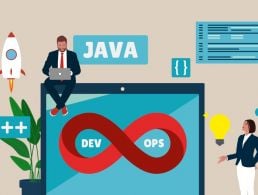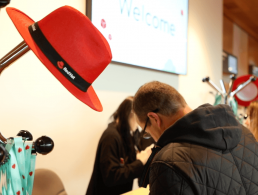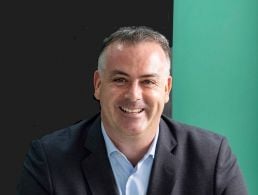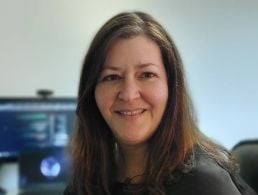Red Hat’s Rachel Lawton wants to reach out to the next generation and prove that the tech stereotype of ‘nerds chained to a desk’ simply isn’t true.
Rachel Lawton been working in the tech industry and with Red Hat specifically for five years. She graduated from the Southeast Technical University (SETU) with an honour’s degree in the internet of things (IoT) – in fact, she was part of the inaugural class to graduate with that degree in Ireland.
It was through her final-year project that she caught the attention of her current employer, where she is now a senior software engineer. This project was a system that would detect if a driver of a vehicle was having a stroke using AI and sensors. It would then notify the emergency services of the location of the driver.
“I’m always looking to get stuck in and be a part of innovative projects that I can get my hands on [and] leading and helping develop new areas of our project in my immediate role as senior engineer,” she said.
“Extracurricular things like being the programme leader for school visits in collaboration with SETU, being on the leadership committee for the Waterford site or being the chair of the Sports and Social in Red Hat Waterford assisted me in attaining senior software engineer in so little time.”
‘I look forward to the day it’s normal for women to join STEM just like it is for childcare and teaching’
Mentoring people is another part of Lawton’s role that she really values, as well as reaching out to the younger generation. “I’m the Red Hat Ireland programme leader for school visits in collaboration with SETU. This involves sending Red Hatters to schools all over the south-east of Ireland, with the express goal to help break all the stereotypes of the tech industry and try to get people to think about STEM who would have never considered tech as a career.”
What does your typical day tend to look like?
My typical day-to-day will usually start with the breakfast catch-up in the canteen with my colleagues. I’m very much a chatty person; to me, work shouldn’t be this boring, dull place that you dread going in to, so I like to try to bring as much craic and fun to the office, so there’s never a dull moment.
From there, I’ll usually check in with the intern I’m mentoring to make sure they are good to go for the day and then go straight into a few meetings like stand-up, planning, refinement etc. I’m a bit of an odd one out in the sense I enjoy meetings – shock horror – I find them extremely useful because I’m very much a visual and audio-style learner because of my dyslexia. Getting the overall plan is the key to my success.
That will usually get me to late morning where I’ll then start working on the issues I assigned myself. The project I work on is called Kuadrant and is extremely interesting because it’s open source, meaning the work we develop is open to anybody to contribute to and look at. It’s deadly because we have a mad amount of features like multicluster ingress, robust access management, advanced security controls and in-depth observability that we get to work on. Kubernetes, Golang and Operators are something I have a great interest in and knowledge of so being able to work on them daily is very fulfilling.
After lunch, I’m back to working on the assigned issues which are often pair programming with colleagues or rubber ducking (bouncing ideas back and forth). Towards the end of the day, I like to send out all my emails and work on some of my extracurricular things like looking for volunteers for the next school visits or telling the office about some sports and social things coming up. You also can’t forget the occasional pool game or two scattered throughout the day along with the buckets of tea I drink as well.
What tech tools and platforms are key to your working life?
I’m quite a simple lady when it comes to my tools and platforms. A lot of the tools and platforms I use are there to help keep me organised and help minimise the things that I’m bound to forget if I don’t write them down. My number one thing is a to-do list, crossing things off on your list is one of life’s simple pleasures. I have both digital to-do lists (Obsidian or Slacks Canvas) and physical ones.
The next big thing I can’t live without, and I don’t understand when people don’t have it, is ‘dark mode’. To the people that don’t have it: do you like burning your retinas? I have it on everything and if it doesn’t come built in I have a plugin Dark Reader.
In terms of productivity things like shortcuts and aliases, I have one or two but if I have to learn a bible-size amount of commands that will ‘make my life easier’ that’s a hard no for me. I’ll stick to writing out ‘git pull upstream project’ rather than some magical ‘gpup’. I like to think it keeps me humble and I can explain to people I’m mentoring what I’m teaching, who are only starting in the industry.
Why did you get involved with Red Hat’s school visits programme?
The reason I got involved in this is I’m a big advocate for getting the younger generation into STEM, both girls and boys. Unfortunately, the girls need a lot more convincing than the guys. I needed that convincing when I was younger. For the longest time, I thought I wanted to be a chef until I did work experience in a local café and realised that being a chef is so hard and they have to work very early or very late hours for not great pay. I was stumped after that about what I wanted to do.
My career guidance counsellor – how do I say this nicely – needed to come into the 21st century and realise that women can do the stereotypical men’s roles. The three things that I and other girls were told as career options were childcare, primary school teacher or nurse. It wasn’t until I spoke to a career guidance counsellor from a different school where computing was flagged as a possible career. I remember laughing at him and saying ‘very funny, what a thing to suggest’.
I was poor at maths so did Ordinary Level all through school, never touched a computer bar to buy things online and watch YouTube and only really liked biology in terms of science but he somehow convinced me to give it a go.
I never want girls to go through doubt and useless old-fashioned career advice that I had to go through, I want them to know that all the stereotypes of the tech industry aren’t true. Not all of us are big nerds chained to a desk with our hoods up drinking Monster in a dark basement. It’s one of the most social and fun industries to be in.
All the efforts that go into being the programme leader and all my colleagues who use up their precious time to facilitate the promotion of STEM is worth it. We are seeing more and more girls coming into Red Hat for transition year work experience and also more and more girls enrolling in computing courses in SETU as a direct consequence.
What are you most excited about for the future of your industry?
I’m excited for the AI overlords to make our jobs redundant so I can retire early – no, I’m joking. I’m excited about the open-source ecosystem becoming a wider, more accepted way of developing code and for it to become the standard across the board for all companies.
I’m also looking forward to new projects coming out of the Cloud Native Computing Foundation. I want to see what the next Kubernetes is or the next Prometheus or even what new things they have to offer.
I also look forward to the day it’s normal for women to join STEM just like it is for childcare and teaching. The day I don’t have to organise school visits anymore won’t be a sad day, it will be one to celebrate because it means there are just software engineers, not female engineers as if we are unicorns.
Find out how emerging tech trends are transforming tomorrow with our new podcast, Future Human: The Series. Listen now on Spotify, on Apple or wherever you get your podcasts.




